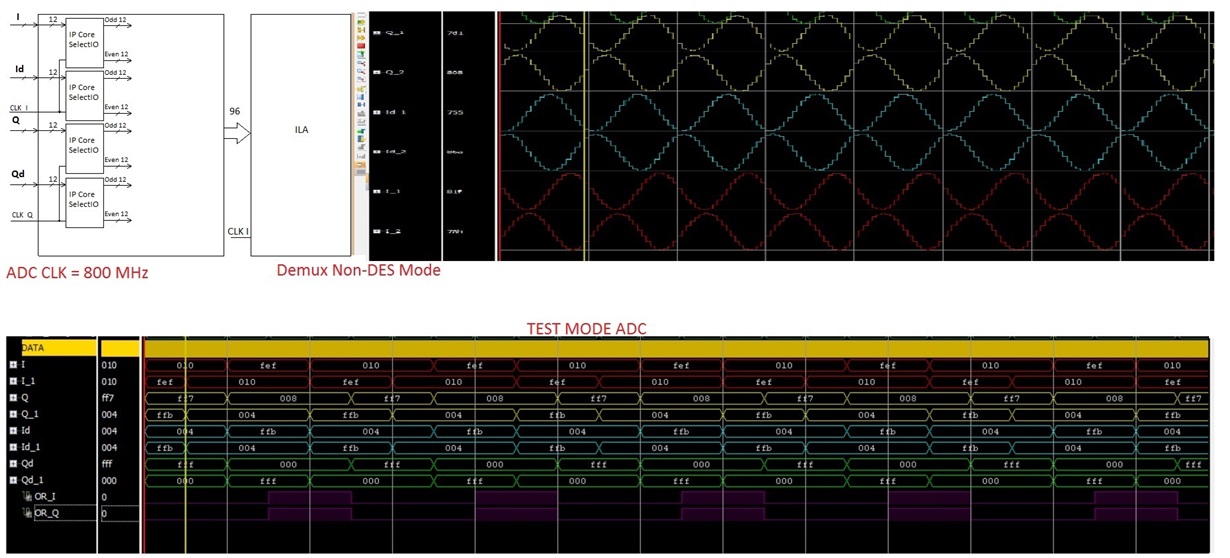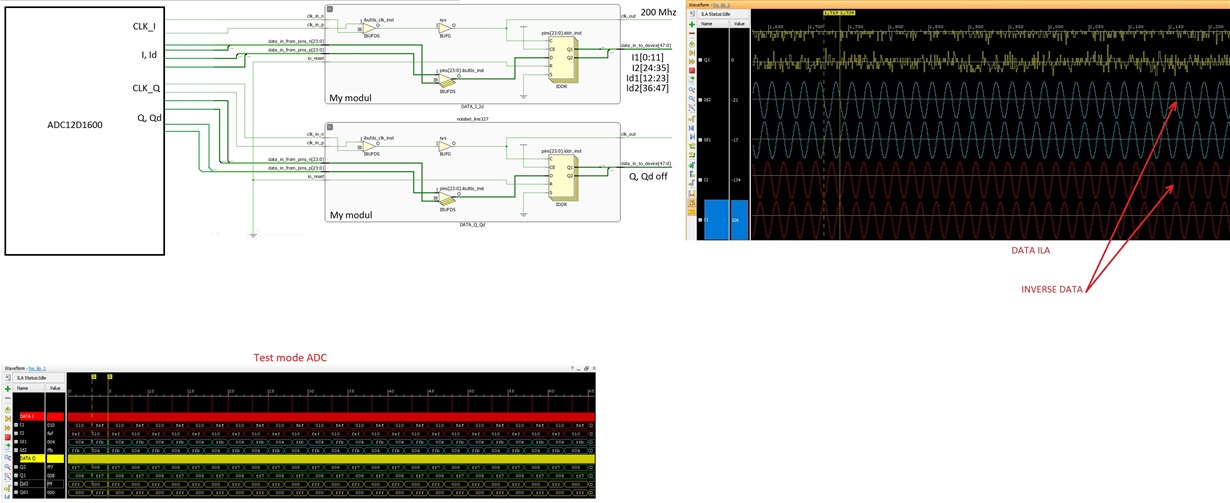Other Parts Discussed in Thread: , ADC08D1500
The ADC receives a clock frequency of 800 MHz. ADC Demux Non-DES Mode.
CAL_ADC = 0
DDRPH_ADC = 0
ECE_ADC = 0
CALDLY_ADC = 0
FSR_ADC = 0
NDM_ADC = 0
TPM_ADC = 0
PDI_ADC = 0
PDQ_ADC = 0
DES_ADC = 0
Configuration register 0x2010. CLK_I and CLK_Q 200 MHz. Data is sent to SelectIO. I connected to the output of SelectIO ILA. I get odd data inverted. ADC test mode data is correct.




